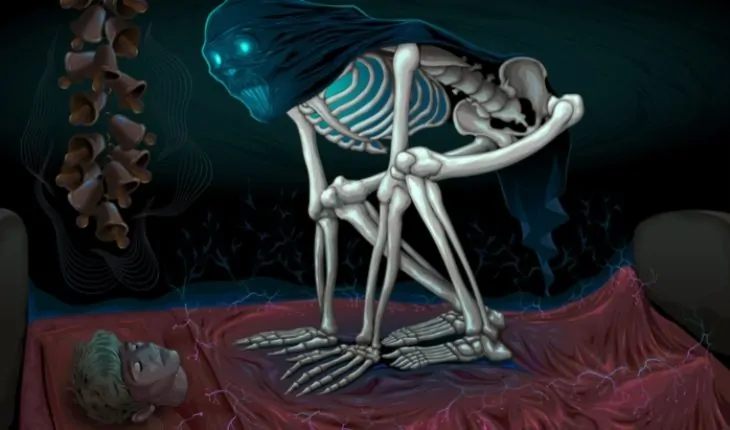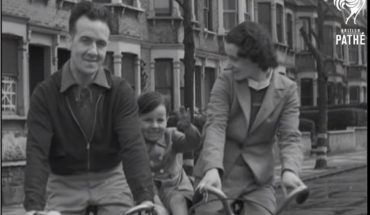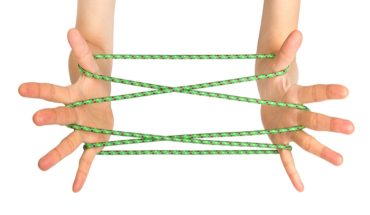Dr Neil Stanley is one of the UK’s foremost sleep experts and author of How to Sleep Well. Over the last 37 years, he has helped diagnose thousands of people with sleep problems who have been referred to his sleep laboratory at the Royal Surrey County Hospital in Guildford. Because of his extensive experience with parasomnias, when people walk, talk and act out dreams when their conscious mind is still asleep, He has also been called as an expert witness to many trials around the world where defendants are claiming they were sleeping when they committed crimes.
Sexsomnia
There are 96 recognised sleep disorders but one of the most bizarre is sexsomnia – when people have sex when they are fast asleep. It’s much more likely to affect men since the physical act of penetrative sex is straightforward and instinctual and only requires primitive parts of the brain to be aroused. Women have more emotional trigger and cues which require a high level of consciousness to participate fully in a sexual encounter. Sexsomnia, which occurs in deep sleep, is rarely reported but may be more common than we think if it’s accepted by partners. However, outside a loving tolerant relationship, sexsomnia can get men into serious trouble.
When the call came in from a lawyer in Scandinavia, I was immediately intrigued. A young man of previously good character was accused of sexual assault and he was claiming he was fast asleep the whole time. According to the law, you can only be found guilty of a crime if it can be shown you committed the act, and knew what you were doing – known as mens rea. This defendant agreed that he committed the act but that he was unconscious. Without mens rea, you can’t be convicted,
I agreed to act as an expert witness for the defendent but the case didn’t look good. The encounter had happened after a group of friends got together to drink and play cards in a cabin in the woods. The woman in question had fallen asleep in the same bed as the defendant – top to toe with no romantic intentions – and had woken up to find the male trying to have sex with her. Her shouts had roused the house and he had been caught in the act – but groggily insisted he knew nothing about it. I explained to the court that sexsomnia was a recognised parasomnia and a variation of sleep walking but I don’t think they were convinced. A conviction was almost certain when he was saved by his ex-girlfriend coming forward to testify that she had put up with his sexsomnia for years and was one of the reasons for their split. She had grown tired of his advances which could happen any time during the night and had often made her late for work. After her testimony, he was acquitted.
REM behaviour disorder
Unlike sexsomnia, REM behaviour disorder occurs during the Rapid Eye Movement sleep cycle which is when we dream. This disorder can be quite dangerous to the person who has it and those around them because they literally act out their dreams. Just imagine all the scary dreams you have ever had and then consider the possible consequences of acting them out in real life. People suffering from PTSD often have violent dreams which re-enact stressful times in their lives, which might have occurred in war zones. In fact, REM behaviour disorder has been used 74 times in UK courts as a defence against murder and rape.
The law is not set up particularly well to judge cases where REM behaviour disorder is the defence because it is one person’s word, but previous history can be taken into account or a particular set of circumstances.
In one sad case, a man killed his wife by throttling her with his forearm while they were lying in bed – he said he was asleep and only realised what he must have done when he woke the next morning to find her dead with a livid bruise across her neck. In his case, he appeared to have enjoyed a loving relationship with his wife and had no previous convictions for violence. To outsiders, his grief and remorse appeared to be sincere. The defence accepted that he had acted out a dream because he had recently come off a medication which disrupted his brain waves – a unique set of circumstances which lead to a tragic end.
Nocturnal sleep-related eating disorder
The woman who came to see me at the laboratory was obviously distressed and confused. Her problems stemmed from the fact that her house mates believed she was secretly eating their food – around 3000 calories a night – and she was completely unaware of this. The only thing that did give her pause for thought was the strange conundrum of her weight loss effort. Despite sticking to a low calorie diet with the help of a weight loss programme, she was piling on the pounds.
We organised to set up movement monitors and a video camera at her home, and sure enough, after midnight she appeared at the fridge door and started eating a pat of butter like it was a Mars bar. The electrodes we had attached to her head showed her brain waves were still in a sleep cycle, so she was completely unaware of what she was doing. After that, the house mates stopped looking at her askance but put a lock on the fridge. We advised her to improve her own sleep hygiene and make sure she didn’t skip meals during the day which made her body crave food at night. I believe this helped but I never did find out if she managed to lose weight.
Nocturnal sleep-related eating disorder tends to affect women more than men. It shouldn’t be confused with Night Eating Syndrome which is an uncontrollable urge to eat comfort foods late at night after waking.
Extreme sleep walking
Sleep walking, also known as somnambulism, can lead to broken bones and even death so we do take it seriously. In most cases, people who are still in deep sleep get up and walk short distances before returning back to bed, but things can go wrong when they are in unfamiliar places.
One regular sleep walker finally came to the sleep lab after breaking his wrist by jumping out of a first floor window of his hotel in Cornwall. He had been deeply asleep, having fallen asleep about an hour before, and was completely confused when he woke up in a flower bed with a painful wrist injury. It also ruined his surfing holiday. What seems to happen is that the brain carries with it an internal map and the sleep walking person, guided by the subconscious mind, follows a familiar route, never mind if the actual environment is completely different.
People have been killed falling off hotel balconies when they were asleep so we were worried about what the young man might do next.
We advised him to make sure he got plenty of rest – people are more likely to sleep walk of they are sleep deprived – and to avoid alcohol and certain medications which can make sleep walking worse. He was happy to follow our advice since he was keen to get back on a surf board and didn’t want a repeat.
For parents of young children who sleepwalk, we recommend creating a safe sleep environment with a bed low to the ground. Always remove sharp objects from near the bed and install gates on stairways. It’s also a good idea to lock doors and windows to your home.
Night terrors
Mum was obviously extremely anxious and upset for her little boy, who looked completely happy to me as he looked around my office with an inquisitive air. Yet, she was convinced that he spent almost every night in a state of abject terror haunted by the most terrible visions and nightmares.
What she described did sound frightening indeed. Every night, after her son had been asleep for a couple of hours, he sat bolt upright in bed, screaming and shouting with a look of horror on his face and trembling with fear. The night terror lasted several minutes before he lay back down and went quietly back to sleep.
I was able to reassure her that her little boy, who was 10 years old, was not actually aware of any of his terrifying paroxysms. Night terrors are relatively common and occur when the conscious part of a child’s brain is asleep but the part of the brain that registers fear temporarily wakes up and acts out a fear response. It occurs during deep sleep and has nothing to do with dreams at all The child knows nothing about it and will remember nothing about it the next day, or even if you wake them during the attack.
Unfortunately, in many cases the parents project their own fear onto the child who then becomes anxious. I counselled the mother not to let her child know she was upset by his sleep issue. And she didn’t have much longer to bear the discomfort. Night terrors, which begin in children between the ages of 3 and 12, normally cease when a child reaches adolescence.
Insomnia
Insomnia, which is characterised by difficulty getting to sleep, and staying asleep for long enough to feel refreshed the next morning, is a very common problem but few people suffer chronic insomnia which really disrupts their life. A lot more people say they are insomniac than actually are and lack of sleep is usually down to stress or diet or medications, or even how warm you like your bedroom.
One patient came to our lab after years of poor sleeping without any obvious reason so we decided to bring her into the lab to stay overnight and be monitored. She was put in a bed with monitors to check her brain waves, heart rate and movement to try to get to the bottom of her issues.
To our great surprise, and hers, she spent a restful night sleeping and woke feeling great, It turned out that a good mattress and clean sheets in a cool dark room with no noisy neighbours was exactly what she needed and exactly what she wasn’t getting at home. She may also have just been deluded.
Another insomniac who wasn’t came to the lab to get a confirmation about his chronic idiopathic insomnia – something for which he is still quite famous for overcoming to have a successful showbiz life. He was actually quite angry when our laboratory findings showed he had quality sleep for an ideal amount of time since it undermined an identity he had carved out for himself as a heroic figure for conquering sleep deprivation.
Sleep apnoea
Everyone thinks that sleep apnoea, which is when people stop breathing for periods of 10 seconds of more multiple times per hour during sleep, only happens to middle aged men with an overlarge girth. In fact, they are the typical sufferers – being overweight is a risk factor because excess fat can block the airway during sleep – but it can happen to anyone.
The girl who came to see us was 16, slim as a reed and simply complaining of being very tired and groggy during the day. She had been referred by her GP because she was beginning to fall behind at school and nothing was helping including going to bed early and starting school late so she could have extra time in bed in the morning. The likely explanation was just teenage tiredness but there was an intriguing extra factor – her parents had noticed that she made a funny snorting sound when she slept, a bit like a truffling pig.
We arranged to monitor her at home and wired her up with electrodes to measure brain waves, oxygen monitors and a video camera. What soon became apparent was that this slip of a girl had one of the worst cases of sleep apnoea we had ever seen. The monitors that measures air flow in and out of her nose and mouth showed she stopped breathing for 10 seconds or more up to 50 times an hour. This meant she was rousing herself almost every 10 seconds to clear the obstruction as her blood oxygen levels plummeted. The snorting noise was her doing this again and again. No wonder she was tired as she never got any real sleep.
We immediately referred her to an ENT specialist who diagnosed an upper airway abnormality which was causing an obstruction when she lay down. She had minor surgery to correct the problem and I assume she is now sleeping deeply and excelling at her studies.
The other memorable case of sleep apnoea which does spring to mind was a clinically obese man who fitted the profile perfectly. He was overweight, a smoker and enjoyed several pints before bed. But the length of his breathing pauses were phenomenal – we recorded gaps of 180 seconds or more. This makes him up there with world-class free divers when it comes to holding his breath. The remedy was simple – we advised him to lose weight and gave him a Continuous Positive Airways Pressure device to help him breathe more easily while he slept. And I never told him he was a world record breaker.
Sleep paralysis
This is a benign but scary condition which affects around 40 per cent of adults at some point in their lives and happens when the brain wakes up before the natural paralysis of sleep wears off. A healthy person is always paralysed during sleep because otherwise we would all act out our dreams and wander around in a sleeping state.
People report this as feeling weighed down to the bed unable to move for up 40 seconds after waking. You can still see and breathe but your limbs are paralysed.
We don’t have any medical solution to this problem and jusr reassure people that sleep paralysis is normal and will pass soon.
Periodic limb movement
Her husband was black and blue from all the kicking he got during the night from his wife of 20 years. He said that she kicked, and sometimes punched him, repeatedly during the night. Yet when I met her, and her long suffering husband, it was clear that she was gentle and not at all violent in her waking life. She was quite meek and very apologetic. She knew nothing about her night time kicking habit but he certainly did and showed us the marks to prove it.
When we got her settled in the lab with movement monitors on, we saw indeed that she did flail out when she was in deep sleep. This is actually caused by involuntary flexing of the muscles, mainly in the legs but also in he arms and can happen repeatedly throughout the night. It’s usually bed partners who report the problem or there are tell-tale signs like torn sheets where feet have kicked straight through the fabric.
In her case, stress was a major part of the problem. Her meekiness hid an anxious personality that dwelt on problems like global warming and the possibility she would develop dementia like her mother. So we advised her to do stress-relieving activities before bed like taking a hot bath and reading a book instead of being on a screen. I believe in this case, like in most we see, the couple eventually resorted to separate beds which saved his bruises.
This shouldn’t be confused with restless legs syndrome which occurs during the day and just prior to sleeping when someone is lying or sitting down for a period of time.
Sleep talking
Like sleep walking, sleep talking happens in deep sleep and is not related to any kind of dream narrative. Some sleep talkers can make sensible, if one sided, conversations which are correct sentences. Others talk babble and nonsense which makes no sense to anyone.
Unfortunately for this patient, he talked quite sensibly in his sleep, mainly about the sexy attributes of another woman who wasn’t his wife. Not surprisingly, his wife was hurt and outraged, believing he was spilling the beans on infidelity in real life, and there was no smoke without fire. He was dumbfounded and claimed to have no desire to have sexual relationships with the woman, who was a joint platonic friend.
I was asked almost to arbitrate which is why I ended up explaining that sleep talking was not part of the conscious mind and even if it sounds sensible, it is usually random. She was reassured when I told her about another case of a young man who regularly shouted out ‘where’s the body? I put it down the well’ at 2am in the morning to the consternation of the other boys in his dorm at a prestigious boarding school. Just because he said it, I explained, it didn’t mean he was an actual murderer although he wasn’t a popular person to share a room with.
Kleine-Levin syndrome – Sleeping Beauty Syndrome
The only time I ever dealt with a patient with this very rare syndrome, turned out to be a case of mistaken identity.. The syndrome is so rare that only a handful of specialists will ever see a genuine case, when a young person experiences episodes of sleeping almost all the time, just waking to go to the toilet or eat something, before falling back to sleep. This can go on for months or years, but in between, the person may live a perfectly normal life, always dreading the next onset of the illness.
The girl who came to see is was in her mid teens and did indeed sleep most of the time. She was also very underweight, complained of muscle pains and brain fog. Her GP, who had never seen another case, queried Kleine-Levin syndrome after her mother brought in a newspaper article about the condition.
In fact, we monitored her for a week and it was clear that she didn’t have the other key characteristics of this syndrome, which is hyperphagia, or inappropriate appetite which leads to someone eating vast amounts of calories for the brief periods they are awake, and hypersexuality, when they behave in an inappropriate uninhibited way with care givers. True sufferers of Sleeping Beauty Syndrome can also appear spacey and child-like, almost otherworldly.
In the end, we diagnosed ME, or Chronic Fatigue Syndrome, which had probably been triggered by a viral infection, although no on really knows. I got the impression that the mother of the girl was disappointed – perhaps she thought the Sleeping Beauty syndrome diagnosis was a little less grim sounding, but there is no fairy dust on either condition sadly.
Narcolepsy
We occasionally see patients with narcolepsy which is when people fall asleep at inappropriate moments such as when they are having dinner or doing the weekly shop. A lot of people with this condition are not diagnosed for many years because they work around the problem and avoid triggers and take naps whenever they feel the need. Also, around half of GPs in the UK have no training in sleep medicine and don’t recognise the symptoms. The exceptions are those that also have cataplexy, when they suddenly lose muscle tone. This causes them to collapse which often lands them in A&E and they tend to get diagnosed earlier.
In this case, the female patient had been falling asleep for 20 years when she was finally referred by her GP. It was now becoming a problem because she had a new relationship and her partner was concerned that she kept nodding off. We booked her for a stay at the sleep lab and confirmed the diagnosis with a polysomnogram which analysed her sleep patterns as well as her brain waves and oxygen levels and muscle tone, as well as asking her to fill out a questionnaire to measure her excessive daytime sleepiness. We also did a multiple sleep latency test which measured how long it took her to fall asleep during the day in her own home.
There is a blood test which looks for a genetic marker called HLA DQB *0602 and she tested positive. However, it doesn’t make it 100 per cent certain since 30 per cent of people without narcolepsy also have this genetic marker. Increasingly, we are also testing for levels of a brain chemical called hypocretin in the spinal fluid. Many cases of narcolepsy are linked to a defiency of this chemical which helps to regulate sleep.
The monitors did show that she fell asleep almost instantly at least five or six times during the day and had all the hallmarks of narcolepsy. We couldn’t offer her a cure but there are ways to reduce excessive daytime sleepiness including taking regular brief naps and sticking to a strict bedtime routine. People with cataplexy can take a medicine called sodium oxybate which can reduce the likelihood of sudden collapse. Luckily her partner was supportive and was pleased that she wasn’t just bored by him.
- The strange world of sleep disorders - 29th January 2019







